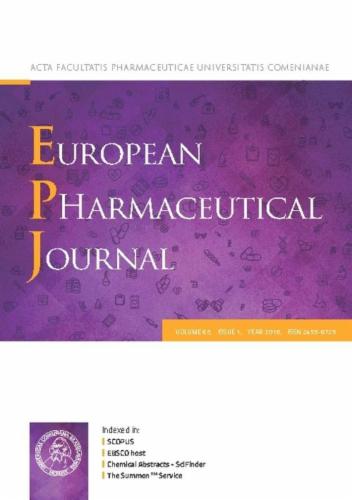The Global Bioequivalence Harmonisation Initiative (GBHI): Report of the sixth international EUFEPS/PQRI conference
IF 4.7
3区 医学
Q1 PHARMACOLOGY & PHARMACY
引用次数: 0
Abstract
At the 6th International Conference of the Global Bioequivalence Harmonisation Initiative (GBHI), co-organised by the European Federation of Pharmaceutical Sciences (EUFEPS) and the Product Quality Research Institute (PQRI), critical bioequivalence (BE) topics were discussed by pharmaceutical scientists from academia, industry and regulatory agencies, revealing the following main conclusions:
(1) Physiologically based pharmacokinetic/biopharmaceutic modelling (PBPK/PBBM) for solid oral drugs: PBPK/PBBM gains increasing recognition for generic drug development, e.g. waivers of fed studies and drug interaction studies with proton pump inhibitors. However, especially for complex formulations containing low-solubility compounds, more data are needed for modelling-based conclusion regarding BE in fed state.
(2) Narrow therapeutic index drugs: A progress towards harmonisation of BE criteria from US-FDA and EMA speakers was made as there is consensus in the usefulness of applying a mixed scale for BE acceptance range depending on variability, via either fully or partially replicated design. Differences still remain regarding variability comparison and the selection of regulatory constant (0.760 vs. 1.05361). All parties confirmed the importance of controlling type-I error.
(3) Single- vs. multiple-dose studies for BE demonstration of modified-release (MR) products: To circumvent multiple-dose studies, model-informed approaches were discussed based on real-life data, e.g. to simulate steady-state profiles from single-dose data. To reduce the burden in patient trials for long-acting injectables promising modelling approaches were presented, extrapolating from incomplete steady-state scenarios.
(4) BE demonstration for additional dose strengths of solid oral MR products: For multiple-unit dosage forms where strengths differ in number of units only, testing BE of the highest dose was considered sufficient. In addition, there was some consensus that, whenever extrapolation from one strength to the others is not easily established, the “bracket-approach” of the EMA focusing on the intake conditions in the label claim (fasted or fed), can help mitigating risks without adding significant cost and effort.
(5) Partial AUC for BE demonstration: Clinical relevance is key to decide on the relevant PK metrics for BE assessment whenever possible. There was consensus that the BE criteria and evaluation strategy may be best specified in product-specific guidances – preferably with international harmonisation.
(6) BE of orally inhaled drug products (OIDPs): The “weight-of-evidence” approach of US-FDA and the stepwise approach of EMA largely differ. The auditorium was in favour of combining data on in-vitro characteristics and PK exposure. For prediction of comparable efficacy of two OIDPs, there is good trust in PK exposure data whenever they present concentrations being absorbed via the lung.
GBHI has a strong role in scientifically supporting official harmonisation efforts including the International Council for Harmonisation of Technical Requirements for Pharmaceuticals for Human Use since the first conference in 2015.

全球生物等效性协调倡议(GBHI):第六届EUFEPS/PQRI国际会议报告。
在由欧洲药理学联合会(EUFEPS)和产品质量研究所(PQRI)联合举办的第六届全球生物等效性协调倡议(GBHI)国际会议上,来自学术界,工业界和监管机构的制药科学家讨论了关键生物等效性(BE)主题,揭示了以下主要结论:1)固体口服药物基于生理的药代动力学/生物制药建模(PBPK/PBBM):PBPK/PBBM在仿制药开发中获得越来越多的认可,例如,放弃饲料研究和与质子泵抑制剂的药物相互作用研究。然而,特别是对于含有低溶解度化合物的复杂配方,需要更多的数据来建立基于饲料状态BE的建模结论。2)窄治疗指数药物:美国fda和EMA发言人对BE标准的协调取得了进展,因为通过完全或部分复制设计,根据可变性,对BE接受范围应用混合量表的有效性达成了共识。差异仍然存在于可变性比较和调节常数的选择(0.760 vs 1.05361)。各方都确认了控制i类误差的重要性。3) MR产品的单剂量与多剂量BE演示研究:为了规避多剂量研究,基于实际数据讨论了基于模型的方法,例如,从单剂量数据模拟稳态剖面。为了减轻长效注射剂患者试验的负担,提出了有前途的建模方法,从不完全稳态情景推断。4)固体口服MR产品额外剂量强度的BE论证:对于多单位剂型,其强度仅在单位数上不同,测试最高剂量的BE被认为是足够的。此外,有一些共识认为,每当从一种强度到另一种强度的推断不容易建立时,EMA的“括号方法”侧重于标签声明中的摄入条件(禁食或喂养),可以帮助降低风险,而不会增加显着的成本和努力。5) BE演示的部分AUC:临床相关性是决定BE评估相关PK指标的关键。大家一致认为,BE标准和评估策略最好在产品特定指南中规定-最好是国际协调。6)口服吸入药品(OIDPs)的BE:美国fda的“证据权重”方法与EMA的逐步方法存在很大差异。听众赞成将体外特性和PK暴露数据结合起来。为了预测两种OIDPs的可比疗效,只要它们呈现经肺吸收的浓度,就可以很好地信任PK暴露数据。自2015年第一次会议以来,GBHI在科学支持官方协调工作方面发挥了强有力的作用,包括国际人用药品技术要求协调理事会。
本文章由计算机程序翻译,如有差异,请以英文原文为准。
求助全文
约1分钟内获得全文
求助全文
来源期刊
CiteScore
9.60
自引率
2.20%
发文量
248
审稿时长
50 days
期刊介绍:
The journal publishes research articles, review articles and scientific commentaries on all aspects of the pharmaceutical sciences with emphasis on conceptual novelty and scientific quality. The Editors welcome articles in this multidisciplinary field, with a focus on topics relevant for drug discovery and development.
More specifically, the Journal publishes reports on medicinal chemistry, pharmacology, drug absorption and metabolism, pharmacokinetics and pharmacodynamics, pharmaceutical and biomedical analysis, drug delivery (including gene delivery), drug targeting, pharmaceutical technology, pharmaceutical biotechnology and clinical drug evaluation. The journal will typically not give priority to manuscripts focusing primarily on organic synthesis, natural products, adaptation of analytical approaches, or discussions pertaining to drug policy making.
Scientific commentaries and review articles are generally by invitation only or by consent of the Editors. Proceedings of scientific meetings may be published as special issues or supplements to the Journal.

 求助内容:
求助内容: 应助结果提醒方式:
应助结果提醒方式:


